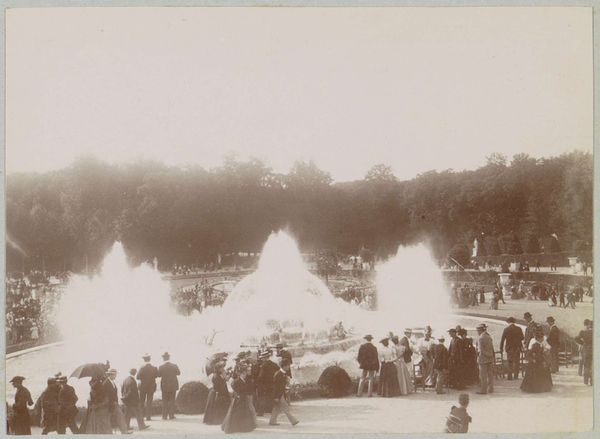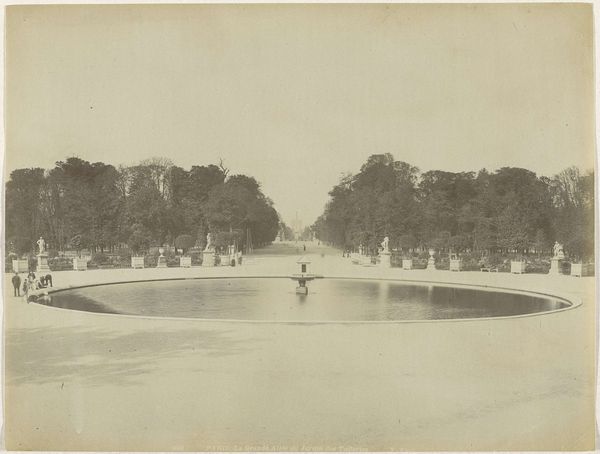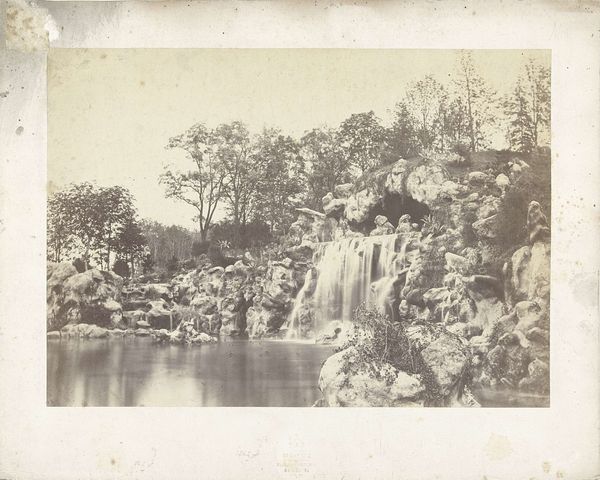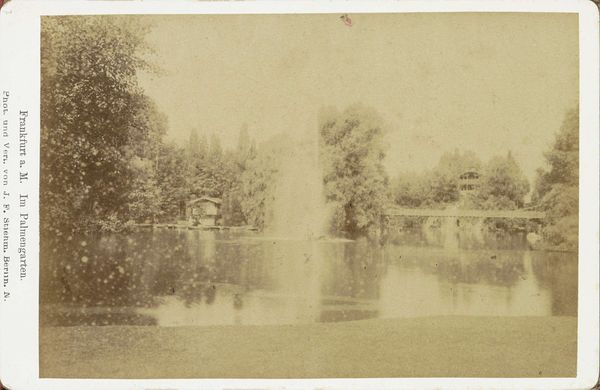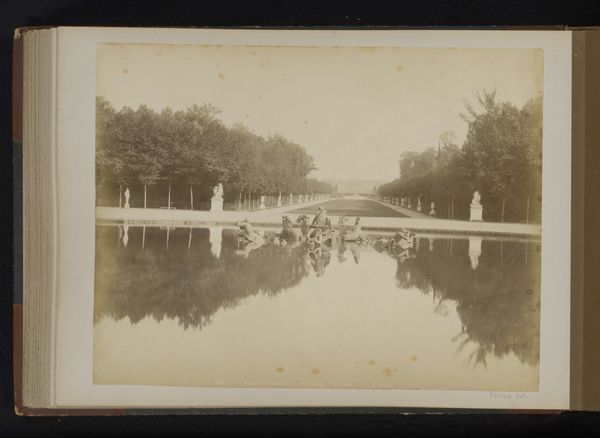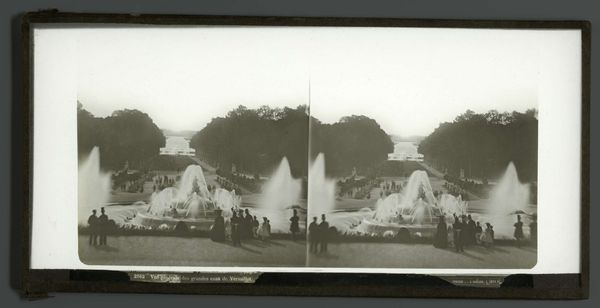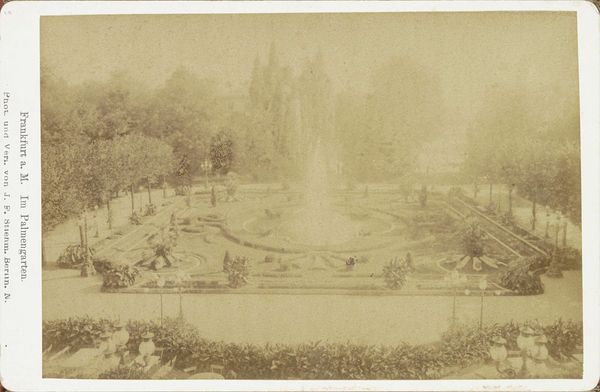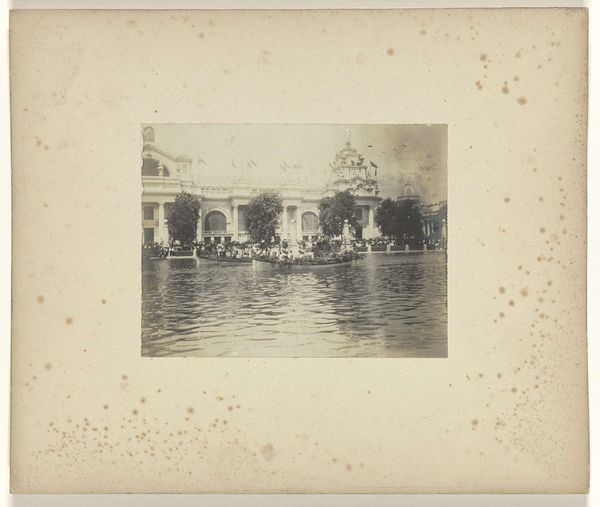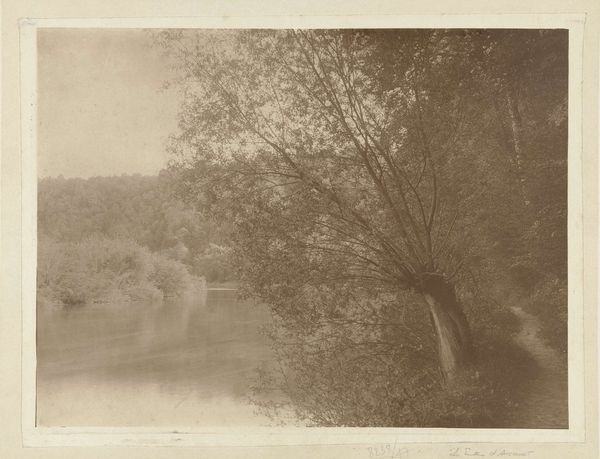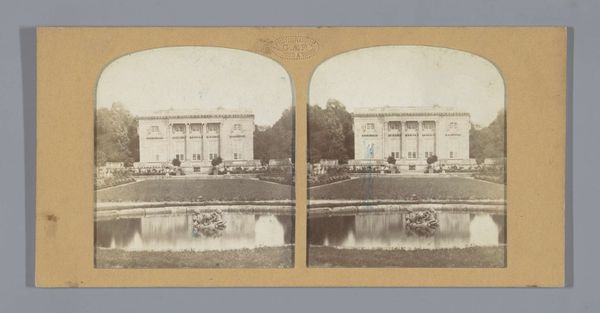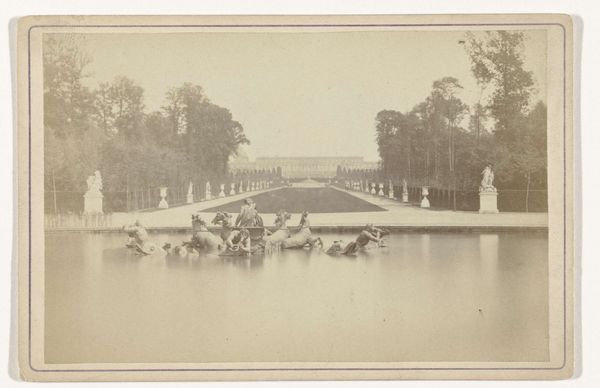
print, daguerreotype, photography
# print
#
landscape
#
daguerreotype
#
outdoor photograph
#
outdoor photo
#
outdoor photography
#
photography
#
cityscape
Dimensions: height 210 mm, width 275 mm
Copyright: Rijks Museum: Open Domain
Curator: Here we have a photograph titled "Beeldengroep in het Bassin d'Apollon in het park van Versailles," placing us in France around 1880 to 1890. The image captures the famous sculpture group and basin, a spectacle of the Sun God’s chariot rising from the water. It's quite a statement about power, isn't it? Editor: My initial impression is one of faded grandeur. The monochromatic tones give it an air of distance, as if viewing a half-remembered dream. The fountain, a powerful symbol itself, seems almost ghostlike. I wonder, what was the intent behind capturing it this way? Curator: That dreamlike quality probably comes from the photographic techniques of the time – perhaps a daguerreotype print. Beyond the technique, though, this was about image management. Versailles represented the height of French power under Louis XIV, and even decades after the revolution, it remained a potent symbol for France's political aspirations. This image helped solidify that on a global scale through mass reproduction and circulation. Editor: Yes, Apollo, the sun god, and the association with Louis XIV makes the statement explicit: divine right and power. But note how the photograph softens the edges of the spectacle, creating a sense of longing for a glorious past, rather than a direct claim to power in the present. It uses recognizable symbolism to evoke feelings. Even the placement of the human figures on the edges accentuates a quiet reflection, they become humble witnesses to the magnificence. Curator: Absolutely. It acknowledges that the present has moved on, but it reminds the viewer of the roots and lineage from which this period originates. Photography at this time played a critical role in both recording and constructing narratives about the past and present. It would create these tangible links and instill the feeling of French cultural authority across borders, bolstering cultural identity. The sculpture, already imbued with complex allegories, becomes part of a wider project of cultural projection through photography. Editor: It makes you consider the shifting symbolic value, too. Today, Versailles is a world heritage site, a museum attracting diverse people with their own projections. Curator: Indeed, so what was once a tool for solidifying national identity now serves global dialogues about art and heritage, which opens up exciting avenues of inquiry. Editor: The play of symbols in images like this photograph remains incredibly compelling, particularly when one traces back layers of context to help expose the meaning within the imagery and its use.
Comments
No comments
Be the first to comment and join the conversation on the ultimate creative platform.
